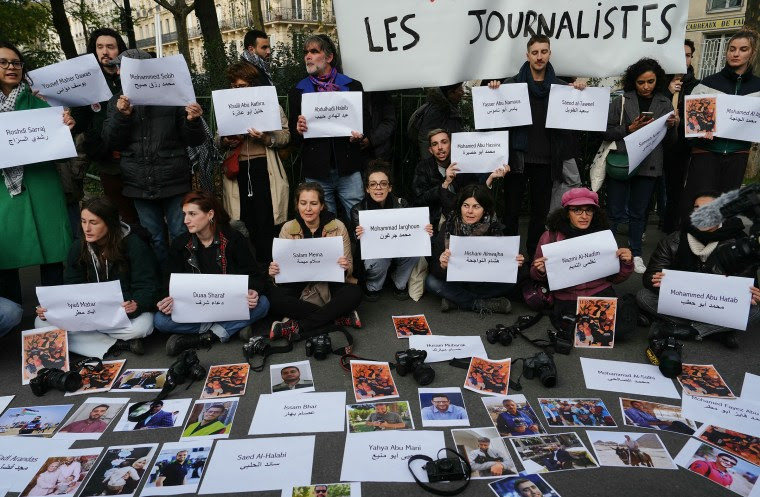As we approach the end of a truly volatile year, Committee to Protect Journlists (CPJ) has documented physical attacks, imprisonment, and legal harassment against the press accelerate relentlessly in frequency and severity, and we have seen more journalists than ever fleeing into exile.
Journalists face increasingly hostile environments in conflict zones, as more journalists have been killed in the Israel-Gaza war than in any other year in any other region, and the war in Ukraine rages on. Outside of conflict zones also proved deadly for journalists due to gang-violence, instability, regime changes and government corruption.
This year continued the dismal trend of an increasing number of journalists forced to flee their home countries. CPJ’s support to exiled journalists has jumped over the last three years, as press freedom environments worldwide become ever more dangerous for local journalists. And those who go into exile need more reliable pathways to safety—we saw this year that journalists living in exile faced trials in absentia, deportion, physical threats and even kidnapping from their new homes.
Governments abused legal structures to punish the press. New laws posed free speech fears for journalists amidst their colleagues being targeted with lawfare and charges purportedly unrelated to their journalism, and their lawyers faced retaliation for defending the right of the press to report the news. Internet shutdowns, communication blackouts, blocking of media sites, and social media censorship also threatened press freedom.
Journalists faced cyberattacks and were targeted by spyware from their own governments and while covering conflict. Meanwhile, in Iran, an explicit assault against the press countinues a year after nationwide demonstrations, while protests across the globe posed risks to members of the press.
Despite these threats, journalists and press freedom advocates pushed on this year—and reaped the fruits of long advocacy work. This year, 35 years after the 1988 murder of Peruvian journalist Hugo Bustíos, we celebrated the conviction of former presidential candidate Daniel Urresti. In the Gambia, nearly 19 years after the murder of Gambian editor Deyda Hydara, a member of former Gambian president Yahya Jammeh’s death squad was convicted in Germany and sentenced to life imprisonment for his role in the murder.
CPJ has fought for and seen promising developments in increased legal protections for journalists. The European Union adopted new rules to safeguard media independence and pluralism in Europe with the European Media Freedom Act, and to protect journalists against strategic lawsuits against public participation (SLAPPs), which are abusive lawsuits intended to silence critical journalists.
In March, journalists welcomed President Biden’s executie order restricting the U.S. government’s use of commercial spyware tools, and in April, Ecuador committed to protect the press in its country following a meeting with CPJ and local press freedom organization Fundamedios.
In May, Estonia announced it would provide emergency visas and limited residency permits to journalists at risk. And this year, Afghan journalists and their families, many of whom have been waiting in limbo for two years, have been granted asylum in countries of safety.
Next year, a super-election year worries press freedom advocates—and for good reason. 2023 elections proved perilous for media workers covering them. Journalists and press freedom advocates tried to prepare for physical threats and internet shutdowns during elections in 2023, but media workers were rageted, threatened, beaten detained and harassed. And CPJ is watching disinformation on social media and artificial intelligence become hot topics in press freedom.
Going into the new year, CPJ’s journalist safety resources are as relevant as ever for all journalists—not just those covering conflict zones.The growing dangers journalists face from covering environmental stories and climate dangers, as well as covering protests and elections, mean journalists, editors, and newsrooms should prepare for physical, digital, and legal threats with CPJ’s safety resources, as well as strengthen mental health resiliency.



